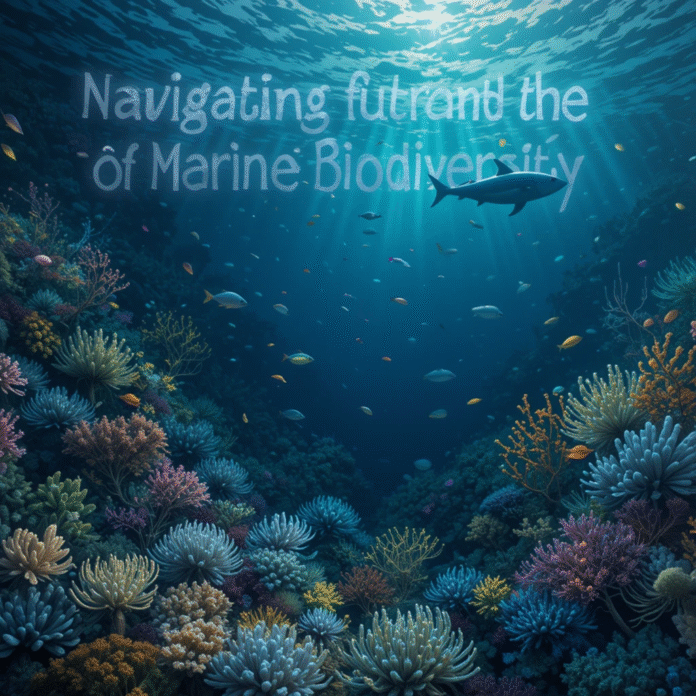Introduction to the Preparatory Commission Meeting
The Preparatory Commission Meeting serves a crucial role in the establishment of a new United Nations treaty aimed at enhancing the protection of marine biodiversity. This treaty emerges as a response to the growing awareness of the threats faced by ocean ecosystems, including climate change, pollution, and overfishing. By emphasizing sustainable practices and the sustainable use of marine resources, the treaty seeks to create a legal framework through which nations can cooperate more effectively in the conservation of their marine environments.
The significance of obtaining additional ratifications cannot be overstated. For the treaty to come into effect, it requires the approval of eight more member states. This milestone is critical, as it reflects the collective commitment of the international community to safeguarding marine biodiversity. The treaty is designed to facilitate cooperation and governance across borders, essential in addressing challenges that no single nation can tackle alone. During the meeting, officials and stakeholders will be discussing strategies to encourage nations to sign and implement this essential accord.
Establishing the Clearing-House Mechanism
The establishment of a clearing-house mechanism is a critical topic in the discussions surrounding the new marine biodiversity treaty. This mechanism is designed to facilitate the sharing of pertinent information among stakeholders, ensuring that data crucial to the protection and sustainable use of marine ecosystems is accessible to all. A central aspect of this initiative is the formation of an informal expert group, tasked with crafting the framework and operational guidelines for the clearing-house. The group’s primary goals include ensuring efficient information exchange and creating a robust platform that can handle the complexities of marine biodiversity.
Deliberations have raised important questions regarding the structure and operational focus of the clearing-house mechanism. Participants in the meeting have expressed differing opinions on whether the initial approach should involve a comprehensive assessment of existing data-sharing mechanisms or a more straightforward review. Proponents of a comprehensive assessment argue that a detailed understanding of current systems will allow for better integration and synergy. Conversely, those advocating for a simpler review emphasize the need for rapid implementation to meet pressing biodiversity challenges. This dichotomy in perspectives reflects the urgency of the situation and the desire to produce tangible outcomes swiftly.
Another focal point of the discussions has been the need for practical recommendations. Stakeholders have stressed the importance of formulating clear, actionable steps that can be implemented within the set deadlines. By fostering a transparent process in which experts can contribute insights, the clearing-house mechanism aims to act as a cornerstone for cooperation among nations and organizations. Ultimately, this initiative will play a crucial role in bolstering marine biodiversity efforts and enhancing global responses to environmental degradation, paving the way for a sustainable future.
The Role of the Global Environment Facility
The Global Environment Facility (GEF) plays a pivotal role in financing and facilitating international environmental initiatives, which makes it a crucial stakeholder in discussions surrounding marine biodiversity conservation. Recently, a proposed memorandum of understanding with the GEF has elicited wide-ranging discussions among member countries, particularly regarding its implications for various vulnerable populations, including small island developing states (SIDS) and indigenous peoples. These discussions are essential as SIDS are often at the forefront of climate change impacts and face unique challenges in preserving their marine habitats.
During the preparatory commission meeting, representatives voiced concerns about the GEF’s funding mechanisms and decision-making processes. Countries have expressed differing perspectives on how GEF funding is allocated, emphasizing the need for transparency and equitable distribution. For many SIDS, the fear is that funding may not reach the communities that rely on marine resources for their livelihoods. Indigenous peoples have similarly raised concerns about their inclusion in GEF-funded projects, advocating for a more inclusive approach that recognizes their traditional knowledge and rights regarding marine biodiversity.
Moreover, the critical need for clarity on the GEF’s funding allocation cannot be overstated. Stakeholders have urged the GEF to provide a clear framework that details how resources will be distributed in light of the diverse needs of countries involved. Only through transparent processes can trust be built between the GEF and the countries it aims to support, ensuring that funding translates into genuine, sustainable outcomes for marine biodiversity conservation. This clarity is especially vital as the stakes are high, with the future of marine ecosystems depending on effective cooperation and action. Addressing these concerns will be essential to enhancing the effectiveness of the treaty and ensuring that all countries, particularly the most vulnerable, direct benefits from collaborative efforts in marine conservation.
Next Steps for the Treaty’s Implementation
As the Preparatory Commission moves forward, the delineation of next steps towards the implementation of the treaty is paramount. One of the principal actions includes the selection of members who will form the treaty’s scientific and technical body. This body is essential not only for providing expert guidance but also for ensuring that the treaty is based on solid scientific principles and responsive to the evolving challenges facing marine biodiversity. The selection process must prioritize individuals with diverse expertise and backgrounds, enhancing the body’s capability to tackle complex environmental issues.
Additionally, the Preparatory Commission intends to focus on the development of financial provisions necessary for the treaty’s operationalization. Establishing a robust financial framework is a critical step towards mobilizing resources for marine biodiversity conservation. It is vital that these provisions are strategically designed to attract funding from various sources, including governmental, non-governmental, and private sectors. Such a multifaceted approach to financing will bolster the treaty’s implementation efforts and ensure long-term sustainability of projects aimed at protecting marine ecosystems.
The significance of these steps cannot be overstated. The successful operationalization of the treaty hinges upon competent governance structures and sufficient funding. With the escalating threats to marine biodiversity due to climate change, overfishing, and pollution, the need for immediate action has never been more urgent. The work of the Preparatory Commission will not only lay the groundwork for future treaties but also set a precedent for international collaboration in marine conservation. Ensuring that these critical next steps are executed efficiently will ultimately influence the treaty’s effectiveness in safeguarding our planet’s marine biodiversity for generations to come.

